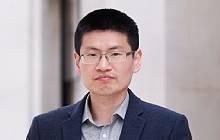Key project information
Duration
June 2023 – May 2029
Contact details
Email: asia@britishmuseum.org
Partners
University of Oxford
Centre National de la Recherche Scientifique (CNRS)
Leibniz-Zentrum für Archäologie (LEIZA)
Supported by
European Research Council
UKRI
Grant number
European Research Council Grant 101071707
UKRI Grant EP/X042332/1
What can horses and metal tell us about the relationship between China and its northern neighbours?
From the second millennium BC, two great cultures formed, traded and fought across Eurasia – one based on horses and herding that stretched from Mongolia to the European steppe, and the other, to the south that consisted of established and newly formed states from the Middle East to the Chinese Central Plains.
Horsepower: interactions between China, Mongolia and the steppe 2000–0 BC studies these relationships between China and neighbouring Mongolia and Central Asia by exploring the trade in horses. It also looks at objects made to ride or drive vehicles and the metal supply from China to further north and northwest.
Combining scientific techniques in genetics, radiocarbon chronology and metallurgical analysis with theories of cosmology, aesthetics and performance plus archaeological excavation in Mongolia and China, this project examines early state formation in Mongolia and China from 2000 to 0 BC.
About the project
Working at the intersection of science and social science, this project cuts across linguistic and cultural boundaries (Chinese, Mongolian, Russian and English). It combines cutting-edge scientific approaches to analyse ancient horse DNA, examine metallurgy and undertake radiocarbon dating of well-targeted archaeological sites that will develop novel theories on the nature of leadership, wealth and power in two major states of the period − the Xiongnu in Mongolia and the Qin in China.
The Xiongnu arose around 209 BC and set the model for mobile horse-borne states through to the rise of the Mongols 1400 years later. Meanwhile the Qin unified China from 221 BC, a period that represents the start of an era which introduced the style of bureaucratic Chinese state recognised today. The formation of both states was heavily influenced by their local historical forces, but they were also substantially affected by their interaction with each other. This intricate relationship of political, economic and culture exchange was arguably a prototype for the Silk Road which connected the whole of Eurasia.
Horsepower will show how the movement of horses south into China from the steppe and the trade of Chinese metals to the north became a critical exchange that ultimately shaped and defined one of the earliest known forms of state entity.
Aims
The aims of this project are to:
- Apply advanced genetic analysis to ancient horse skeletons to explore patterns in the flow of horse trading, the extent of selective breeding to control horse numbers and characteristics that do not fossilise such as colour, speed and size.
- Undertake new scientific analysis of metal objects from the Mongolia steppe including horse gear and chariot fittings within the Museum collection to identify and quantify the degree of mixing and recycling in the life history of metals in past societies.
- Undertake archaeological excavation at a range of sites in Mongolia and China to understand the long-term history of the sacrificial economy of horses.
- Supplement its academic investigations with an innovative programme of public engagement, art and popular science content through blogs, podcasts as well as exhibitions at the British Museum.
Meet the team

Ludovic Orlando
Principal Investigator
Centre for Anthropobiology and Genomics of Toulouse, CAGT (CNRS/University Paul Sabatier)

Chris Gosden
Principal Investigator
School of Archaeology
University of Oxford

Ruiliang Liu
Principal Investigator
Department of Asia
British Museum

Ursula Brosseder
Principal Investigator
Leibniz-Zentrum für Archäologie (LEIZA), Mainz
Project team and Acknowledgements
Project supporter
Project supporter
Supported by
Outputs
Reconstructing the trade history: provenance study of Han bronze mirrors in and out of Han China
JOURNAL ARTICLE
Xiang Wang; Ruiliang Liu; Jun Gao; A. Mark Pollard; Anchuan Fan; Fang Huang; Ruiliang Li; Shixuan Zhang; Fenglin Hua; Zhengyao Jin
Archaeological and Anthropological Sciences (16)
Published in 2024
A view from the countryside: radiocarbon chronology for Zaolinhetan of the pre-Zhou culture in Early Dynastic China
JOURNAL ARTICLE
Xiaojian Li; Wei Liu; Yongxiang Xu; Haifeng Dou; Allen Mark Pollard; Ruiliang Liu
Radiocarbon
Published in 2024
Human-environment interaction systems between regional and continental scales in mid-latitude Eurasia during 6000–3000 years ago
JOURNAL ARTICLE
Guanghui Dong; Linyao Du; Ruiliang Liu; Yuejiao Li; Fahu Chen
The Innovation Geoscience 1(3)
Published in 2023






